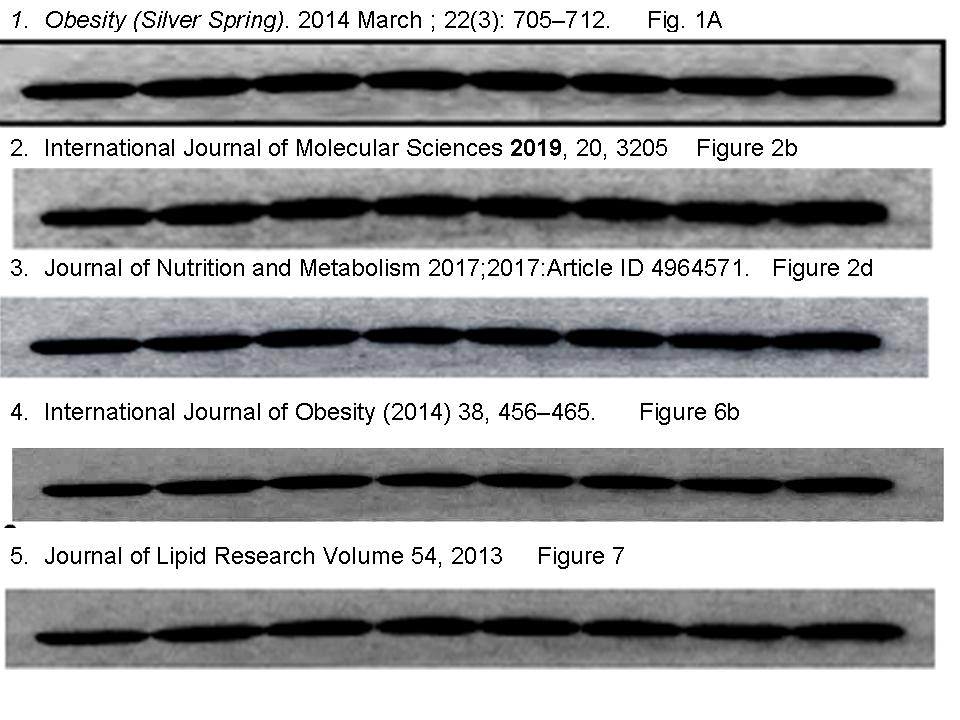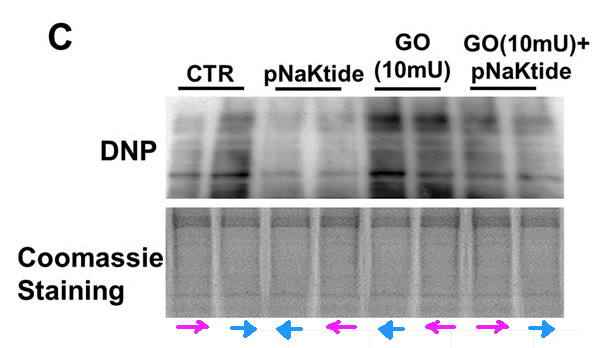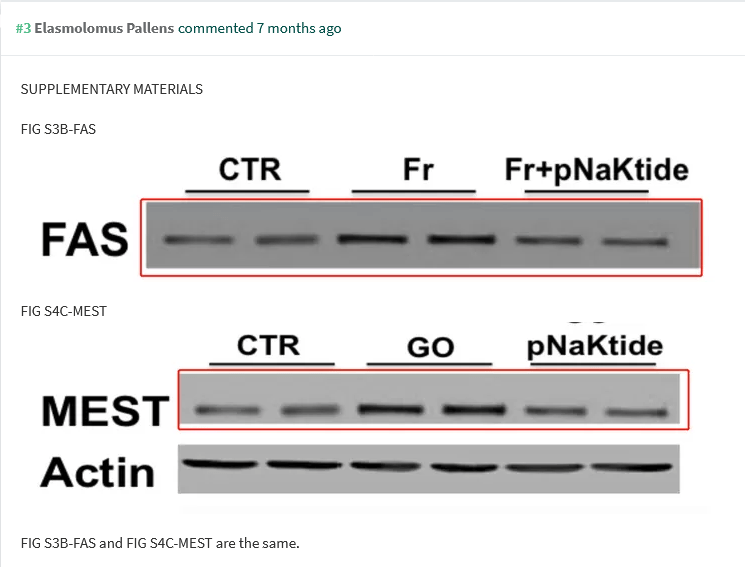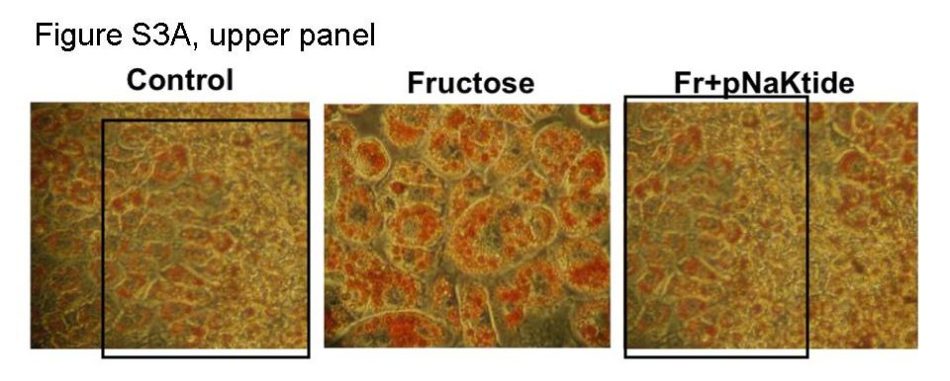The simple solution to the COVID-19 pandemic is charcoal. The little black pills you take when you have a bit of a tummy ache. Medicinal charcoal is a kind of fluffy wood coal, it seems to bind toxins in the gut when consumed, facilitating their removal. Red colobus monkeys eat charcoal to deal with their phenolic-heavy leaf diet (Struhsacker et al 1997). Another primate species, homo sapiens, was observed eating charcoal ice cream, or brushing their teeth with charcoal toothpaste, scientists believe this to be due to its resemblance to shoe polish and the comical effect associated with it. But what if it actually prevents a SARS-CoV2 infection?
So now charcoal is being tested to end the COVID-19 pandemic, in a clinical trial. From inside your gut, it will not only absorb the flatulence, but somehow attack and neutralise the coronavirus in your lungs. Thank Professor Joseph Shapiro, Dean and Vice President of the Marshall University School of Medicine in West Virginia, USA, for that genius idea.
Behold, the peer reviewed paper, from November 2020.
Zeid J. Khitan, Imran Khawaja, Maurice A. Mufson, Juan R. Sanabria, Nader G. Abraham, Stephen J. Peterson, Uma Sundaram, Joseph I. Shapiro Can Charcoal Improve Outcomes in COVID-19 Infections? Medical Hypotheses (2020) doi: 10.1016/j.mehy.2020.110176
As you see, the study appeared in one of the most respected Elsevier journals, Medical Hypotheses, where the wisest of the wisest in academia come to share their scholarly wisdoms or rather, as the journal itself puts it, “radical hypotheses which would be rejected by most conventional journals“. The short paper is Open Access, so it may be Dr Shapiro’s Marshall University paid Elsevier $1850 for the honour. The abstract proclaims:
“We propose to examine the potential utility of oral activated charcoal with the hypothesis that such treatment would lower absorption of microbiome derived toxins and ameliorate systemic oxidant stress and inflammation.”
Leap of Faith
It makes perfect sense. Both viruses and bacteria are microorganisms, right? It’s semantics, really. Bacterial toxins can be absorbed by charcoal, so it stands to reason that charcoal in the intestine will absorb the toxic virus in the lungs. Or something like this, this is why I approached Dr Shapiro for an explanation. His theory has all the buzzwords: cytokine storm, gut microbiome, oxidative stress, exosomes and somehow it all links to obesity. Dr Shapiro told me:
“The idea about charcoal is born from my clinical specialty. I’m a nephrologist, and I’ve taken care of people with end stage renal disease (ESRD) over more than 4 decades. It has come to light in the past 10-15 years or so that some of the symptom complex of renal failure are due to the accumulation of toxins which are derived from amino acids produced by intestinal bacteria. One of these, probably the most important one is indoxyl sulfate which is derived from the amino acid, tryptophan. It is known that activated charcoal taken by mouth can lower the plasma levels of this toxin in patients or experimental animals with ESRD.
Here the story gets a little more complex. In our research lab, we study the pathogenesis of the cardiomyopathy which complicates renal failure. Our research has identified that oxidant stress produced (at least in part) by a signaling mechanism which my late (and brilliant) partner discovered which goes through the (so called) sodium pump or Na,K-ATPase. If we block signaling through this pathway, we ameliorate the cardiomyopathy of renal failure. Further studies have indicated that it is the adipocyte (fat cell) which is the master-controller of the systemic oxidant stress in experimental renal failure (as well as other conditions). To test this, we developed a way to express an inhibitor of this signaling pathway only in adipocytes. We have published extensively on this topic, and if you just search “Shapiro JI”, you’ll find the relevant papers.
Now we take an intellectual leap. Risk factors for severe COVID associated symptoms include age, obesity, renal failure and male gender. All of these increase the ratio of visceral fat to subcutaneous fat. It is our contention that visceral adipocytes which bathe in high concentrations of indoxyl sulfate and other so called uremic toxins derived from the gut microbiome influence the cytokine storm induced by COVID-19. We are still working on the exact mechanism by which adipocytes alter systemic inflammation and control systemic oxidant stress, but it appears that exosomes produced by adipocytes play a significant role. Indoxyl sulfate and other uremic toxins directly stimulate adipocytes to produce such exosomes. Thus, the idea of binding these toxins (or pro-toxins) in the gut prior to absorption.“
Ok, I searched PubPeer for Dr Shapiro’s publications then, which is always the right approach to literature search in such cases. The Na,K-ATPase research by Dr Shapiro proved somewhat… inadvertently erroneous? Kack-handedly mishandled? Like this, spotted by Elisabeth Bik:
Jiang Liu, Riad Kesiry, Sankaridrug M. Periyasamy, Deepak Malhotra, Zijian Xie, Joseph I. Shapiro Ouabain induces endocytosis of plasmalemmal Na/K-ATPase in LLC-PK1 cells by a clathrin-dependent mechanism Kidney International (2004) doi: 10.1111/j.1523-1755.2004.00723.x

This blot recycling is just lazy. Bik found more, all on the Na,K-ATPase pump, all from Shapiro and his colleagues, same characters at the Marshall University and previously at the University of Toledo when Shapiro used to chair of department of medicine, until he became dean and vice-president of the Marshall University School of Medicine in 2012.


Bik even found stretched mice in another Shapiro paper on Na,K-ATPase, this time in context of adipogenesis, which according to Shapiro makes the link to charcoal:
Komal Sodhi, Kyle Maxwell, Yanling Yan, Jiang Liu, Muhammad A. Chaudhry, Morghan Getty, Zijian Xie, Nader G. Abraham, Joseph I. Shapiro pNaKtide inhibits Na/K-ATPase reactive oxygen species amplification and attenuates adipogenesis Science Advances (2015) doi: 10.1126/sciadv.1500781

Blue boxes: The “Control” mouse looks unexpectedly similar to the “pNaKtide 25 mg/kg” mouse.“
There was even more wrong with that paper, as other PubPeer users discovered already:

Wandering Western Blots
The above artistic exercise masquerading as a research paper has two key co-authors. One is Shapiro’s long-term associate Nader Abraham, they met at the University of Toledo in Ohio, where the latter arrived in 2009 from the New York Medical College. Abraham then followed Shapiro to Marshall University in 2012, where he was appointed as Vice-Dean for Research. Somehow Abraham was not happy in such high leadership position, so he first abandoned it in 2014 and then left Marshall completely, back to his fancy (well, not really) New York Medical College, where he just received a half a million grant from NIH, to study obesity and presumably also Photoshop. Abraham was quoted on the occasion:
“I hope that I will be able to transfer this knowledge to the next generation of investigators who will take this field to the next step toward understanding genetic modifiers of obesity prevalence.”
And what next generation he trained! His former postdoc is Komal Sodhi, who after working with Abraham for 14 years, joined forces with Shapiro, already back when they all were at the University of Toledo. When Shapiro moved to head the School of Medicine at the Marshall University, Sodhi started as associate professor there. She recently received her own $444k R15 grant from NIH, followed by another $440k grant, probably as recognition for her currently 19 papers on PubPeer, all with Abraham and many with her new patron. Imagine what new generation of scientists Sodhi is currently training, to “provide an important breakthrough“, her own words, in women’s health. Founding father Abraham will surely be very proud.
Regarding the above discussed Sodhi et al Science Advances 2016 paper, both Shapiro and Sodhi replied on PubPeer and announced to investigate. In September 2020, Sodhi the informed the PubPeer commenters that the duplications were either innocent mistakes or not duplications at all. The case is apparently closed for the Marshall researchers.
Speaking of reused western blots. Here, for historical reasons, is a vintage Sodhi, before she arrived at Marshall University:
Kazuyoshi Inoue, Komal Sodhi, Nitin Puri, Katherine H. Gotlinger, Jiang Cao, Rita Rezzani, John R. Falck, Nader G. Abraham, Michal Laniado-Schwartzman Endothelial-specific CYP4A2 overexpression leads to renal injury and hypertension via increased production of 20-HETE American journal of physiology. Renal physiology (2009) doi: 10.1152/ajprenal.00364.2009


With time, it got bolder.
Jian Cao, Peter L. Tsenovoy, Ellen A. Thompson, John R. Falck, Robert Touchon, Komal Sodhi, Rita Rezzani, Joseph I. Shapiro, Nader G. Abraham Agonists of epoxyeicosatrienoic acids reduce infarct size and ameliorate cardiac dysfunction via activation of HO-1 and Wnt1 canonical pathway Prostaglandins & other lipid mediators (2015) doi: 10.1016/j.prostaglandins.2015.01.002
These wandering western blots (6 incarnations for one blot alone!) are going into the Mario Saad direction:

Compare with:



One of the worst wandering western blot-infested Sodhi-Abraham-Shapiro papers was this one in PLOS One, and it has even more issues:
Komal Sodhi , Nitin Puri, Gaia Favero, Sarah Stevens, Charles Meadows, Nader G. Abraham, Rita Rezzani, Hayden Ansinelli, Edward Lebovics, Joseph I. Shapiro Fructose Mediated Non-Alcoholic Fatty Liver Is Attenuated by HO-1-SIRT1 Module in Murine Hepatocytes and Mice Fed a High Fructose Diet PLoS ONE (2015) doi: 10.1371/journal.pone.0128648





I should mention that the last author on some of the wandering western blot-infested Abraham, Sodhi and Shapiro papers (Cao et al Hum Gene Ther 2011 and Hinds et al Obesity 2014) was the late Attallah Kappas, former Vice-President of the Rockefeller University. Which makes it all even more embarrassing. Here is Kappas with Abraham, issuing awards at a University of Toledo event of 2010:
You might want some colours after that wandering western blot overload now? How about recyclable adipocytes?
Komal Sodhi, Jordan Hilgefort, George Banks, Chelsea Gilliam, Sarah Stevens, Hayden A. Ansinelli, Morghan Getty, Nader G. Abraham, Joseph I. Shapiro, Zeid Khitan Uric Acid-Induced Adipocyte Dysfunction Is Attenuated by HO-1 Upregulation: Potential Role of Antioxidant Therapy to Target Obesity Stem Cells International (2016) doi: 10.1155/2016/8197325

The three right most boxed panels in figures 3 and 7 appear to be the same images, though the panels in figure 7 appear to have had the brightness adjusted. The indicated treatment of the cells for the boxed right most two panels in figures 3 and 7 are different.”
But wait, also this research publication became infected by the wandering western blots! They previously bred inside an older paper by Abraham and Sodhi, without Shapiro:
Tomoko Kawakami, Nitin Puri, Komal Sodhi, Lars Bellner, Toru Takahashi, Kiyoshi Morita, Rita Rezzani, Tim D. Oury, Nader G. Abraham Reciprocal Effects of Oxidative Stress on Heme Oxygenase Expression and Activity Contributes to Reno-Vascular Abnormalities in EC-SOD Knockout Mice International Journal of Hypertension (2012) doi: 10.1155/2012/740203


So here is Abraham with Robert Gallo, the grand wizard of bullshittery who in the 1980ies, with full support of the Reagan administration, stole the HIV virus from Pasteur to pass it off as his own discovery in order to get obscenely rich with a faulty AIDS test and a Nobel Prize. The first part worked out nicely, the second didn’t (read here). Btw, Gallo of course has his own ideas about COVID-19 therapies.
But we strayed off into Abraham’s heme-oxygenase (HO) obesity and away from Shapiro’s Na,K-ATPase and the lipid metabolism research which will cure the world from COVID-19. So let’s return.
Komal Sodhi, Krithika Srikanthan, Perrine Goguet-Rubio, Alexandra Nichols, Amrita Mallick, Athar Nawab, Rebecca Martin, Preeya T. Shah, Muhammad Chaudhry, Saroj Sigdel, Mehiar El-Hamdani, Jiang Liu, Zijian Xie, Nader G. Abraham, Joseph I. Shapiro pNaKtide Attenuates Steatohepatitis and Atherosclerosis by Blocking Na/K-ATPase/ROS Amplification in C57Bl6 and ApoE Knockout Mice Fed a Western Diet Scientific reports (2017) doi: 10.1038/s41598-017-00306-5


The paper was celebrated in a Marshall University press release, which reminded the readers that Scientific Reports is “an online journal from the publishers of Nature“. It promised an easy therapy for a complex disease of non-alcoholic fatty liver disease and may have earned Sodhi the recent $1 million in grants.
Look what Cheshire found in the next year’s Scientific Reports paper. Remember old age as COVID-19 risk factor?
Komal Sodhi, Alexandra Nichols, Amrita Mallick, Rebecca L. Klug, Jiang Liu, Xiaoliang Wang, Krithika Srikanthan, Perrine Goguet-Rubio, Athar Nawab, Rebecca Pratt, Megan N. Lilly, Juan R. Sanabria, Zijian Xie, Nader G. Abraham, Joseph I. Shapiro The Na/K-ATPase Oxidant Amplification Loop Regulates Aging Scientific reports (2018) doi: 10.1038/s41598-018-26768-9

Shapiro, September 2020: “There are some artifacts induced on the old system we used for our Commassie staining that creates artifacts suggesting duplication of lanes. We’ve noted this on internal review of our data.[..] I’m sorry, I mispoke. [..]We have repeated experiments, and we believe that we are in a position to correct figure where there were problems.“
Other users found more, which promoted the journal to issue an Editorial Note in May 2020:
“The Editors are currently investigating concerns that have been raised relating to the reliability of data presented in this article. Appropriate editorial action will be taken once the investigation is complete.“
They probably wait for Shapiro and Sodhi to finish repeating the experiments. There’s lots of work to do:





Obesity and Na,K-ATPase connection seems a bit strained if the only thing to go by are Shapiro, Abraham and Sodhi papers, don’t you agree? Is this fake gel helpful:

Rebecca D. Pratt, Cameron Brickman, Athar Nawab, Cameron Cottrill, Brian Snoad, Hari Vishal Lakhani, Austin Jelcick, Brandon Henderson, Niharika N. Bhardwaj, Juan R. Sanabria, Jiang Liu, Zijian Xie, Nader G. Abraham, Joseph I. Shapiro, Komal Sodhi The Adipocyte Na/K-ATPase Oxidant Amplification Loop is the Central Regulator of Western Diet-Induced Obesity and Associated Comorbidities Scientific reports (2019) doi: 10.1038/s41598-019-44350-9
Also in this case, an editorial note was issued in February 2021:
“The Editors are currently investigating concerns that have been raised relating to the reliability of data presented in this article. Appropriate editorial action will be taken once the investigation is complete.”
The pump’s business end
Now it’s time to lift the mystery why Shapiro arrived to defend with his image integrity expertise a paper he is not even a co-author on:
Jiang Tian, Ting Cai, Zhaokan Yuan, Haojie Wang, Lijun Liu, Michael Haas, Elena Maksimova, Xin-Yun Huang, Zi-Jian Xie Binding of Src to Na+/K+-ATPase forms a functional signaling complex Molecular Biology of the Cell (2006) doi: 10.1091/mbc.e05-08-0735
PubPeer user Mia A. Shandell, postdoc at the University of York, posted in August 2020 this evidence of data manipulation:


There were other issues with that paper, Figures 3B and 2A were also found manipulated, as spotted by other PubPeer users. One also referenced scientific literature to point out that Xie’s research with Na,K-ATPase contradicted the results from other labs and was also not reproducible by others.
Shapiro, despite not being a co-author, surprised everyone by commenting:
“We thank you for the comments on our paper and figures.
- Fig. 3B, the middle three bands do look similar. It was a Coommassie blue staining. The original figure is shown below:

2. Fig. 7A, we think that if you adjust the image from a PDF file with contrast, it will show box-like area all over the image, even the characters. However, if you only adjust the image part, it will not show that kind of artificial effect. Please see the blots below:”

Basically, Shapiro showed the same pictures, but once in blue, which apparently proves something to him. But why did he arrive to comment “on our paper and figures” if he is not an author?
The last author of the paper, Zijian Xie, who died in January 2020, used to be director of the Marshall Institute for Interdisciplinary Research and personal mentor of Shapiro, the one Shapiro mentioned in his email to me. Xie also brought Shapiro with him when he arrived to Marshall University from the University of Toledo. Shapiro was defending their joint scientific legacy about the Na,K-ATPase, on which his own career was built.
Not just that. There is also a business interest. As soon as the above Tian et al 2006 paper was published, Shapiro and Xie patented a “Na/K-ATPase Ligand“.
That ligand is supposed to be an alpha-helical peptide based on the sequence of the Src protein (NaKtide) which they postulated (thanks to the creative gel breeding assays) to interact directly with the Na,K-ATPase pump. Yet I heard that based on circular dichroism spectroscopy the peptide proved to be unstructured in solution; the spectra showed merely a flat line. Meaning, there was no alpha helix structure forming, none at all. Never mind, Xie and Shapiro went on to make a cell-permeant version of the NaKtide and also constructed an adenovirus vector. Say what you want about the spectral analysis: in their published work the unstructured NaKtide peptide proved to have all sorts of biological effects, it led to wandering western blots, cloned gel bands and even whole mouse duplications, as you saw above. Apparently thanks to the co-author Sodhi, she seems to have golden hands and to always produce the right results where others fail.
In this regard, the comment Mia Shandell shared with me about that Xie paper which she commented on PubPeer about and which Shapiro was defending, is very much to the point:
“Any claims Joseph I. Shapiro seems to make about part of the mechanism of oxidant stress involving a direct Na+/K+-ATPase-Src kinase interaction (he refers to as Xie’s discovery) should be cast in doubt. The reasons are the obvious image manipulation in one of the key papers in this field (Tian et al., 2006) and the apparent inability of a number of independent labs to reproduce this data, as highlighted in the original PubPeer post and comments.“
Charcoal clinical trial
Are you now convinced about charcoal as COVID-19-crushing miracle drug, what with Shapiro’s ramblings about Na,K-ATPase and adipocytes, and his previous research on that very topic I showed you above? In this regard, I asked Shapiro if any clinical trials are taking place already. He replied:
“Yes, we are doing a pilot clinical trial at Marshall under the direction of our vice-dean for clinical and translational research, Dr. Uma Sundaram.[..] As the study is in progress, I really can’t comment on what we’ve seen. Since COVID-19 has become less of a frequent problem in WV (thank God), enrollment in this trial has slowed, but I still hope we’ll be able to draw some conclusions from this pilot study. Frankly, the reason we published the hypothesis paper you found was we were hoping larger centers might take this idea and perform a clinical trial faster than we could.“
Uma Sunduram, Abraham’s successor as Vice-Dean for Research at Marshall University School of Medicine, explained to me why the clinical trial is not registered:
“Since this is an investigator initiated trial, funded internally, it is not listed on grants.gov [presumably he meant clinicaltrials.gov, -LS]. And as the study is on going, it’s too early to provide any outcome. We would certainly welcome any inquiries from patients who may be interested in participating, as we are actively enrolling.“
Well, at least there was a press release in November 2020, just when Shapiro’s and Sunduram’s Medical Hypotheses paper appeared. Their charcoal study intended to recruit 250 COVID-19 patients for each trial arm and be performed remotely “over a two-week period“, with clinical assessments done “during weekly calls.” I guess this press release works a trial preregistration at that university? Sunduram was quoted:
“We think activated charcoal can reduce the formation of chemicals made in the intestine by bacteria which are capable of worsening the lung disease.“
The clinical trial received an ethics approval (IRB #1632953) and “was reviewed by the Marshall University Institutional Review Board in the Office of Research Integrity“. They should have reviewed the preclinical papers by Shapiro et al instead.
I asked Shapiro if his creative partners Sodhi and Abraham are involved in the charcoal for COVID-19 research. He replied with “Yes“.
Maybe this crack team can draw some wandering western blots with charcoal?


Donate!
If you are interested to support my work, you can leave here a small tip of $5. Or several of small tips, just increase the amount as you like (2x=€10; 5x=€25). I must stock up on charcoal now!
€5.00





Pingback: Il prato delle bufale – ocasapiens
The more it changes (and) the less it changes. Perhaps, you may want to read “Nostrums and quakery” by Dr. Cramp (1936) as a source of inspiration for your blog:
https://babel.hathitrust.org/cgi/pt?id=uc1.31158001793404&view=2up&seq=6
LikeLike
Congratulations to Dr Sodhi and her colleagues on the recent two retractions. Seems the Marshall University is doing something.
https://journals.plos.org/plosone/article?id=10.1371/journal.pone.0259219
“After this article [1] was published, concerns came to light involving data reported in Figs 1, 4, 6, 7 and 8. The concerns include both similarities across figure panels within this article [1], and similarities between blot images in [1] and blot images reported in other articles [2–11]. In many cases, the similar data represent different experimental results in the different figures and/or publications. In light of these issues, PLOS ONE has concerns about the integrity and reliability of the results and conclusions reported in [1].
The corresponding author requested retraction of this article. They stated that data underlying some of the article’s results are currently held by Marshall University, and that the original data underlying Figs 4A and 7A are not available.
Due to the extensive image concerns and the author’s comments regarding data availability, PLOS ONE concluded that the results and conclusions reported in the article are not reliable. Therefore, the PLOS ONE Editors retract this article.
The article’s authors either could not be reached or did not respond directly to comment on the retraction decision.”
https://www.mdpi.com/1422-0067/22/18/10081/htm
“Following publication, concerns were brought to the attention of the publisher regarding the figures. The microscopy image for one of the experimental groups in Figure 4A was duplicated, appearing in Figure 1A of another published paper [2]. The authors state this was due to carelessness. Additionally, the actin panel in Figure 2D [1] was similar to Figures 2A and 6E of another published paper [3]. The actin panel in Figure 2B [1] was similar to that in Figure 2 of another published paper [4].
The International Journal of Molecular Sciences Editorial Office has taken the decision to retract the paper. The editor-in-chief approved this retraction.
The authors agree with the retraction.”
Pretty obvious the retraction was actually requested by Marshall U and/or Dr Sodhi, but MDPI wanted to have credit for themselves.
More fake stuff flagged recently, as collated by a reader:
https://pubpeer.com/publications/6BF6BCD78CF68B8B1DC710A72C8656
https://pubpeer.com/publications/F1241DE7CFEE085041EA9F7696E634
https://pubpeer.com/publications/FEDB6AFC081F59B77C5F97BBC9E94F
https://pubpeer.com/publications/1104B6AC8E13185D3CB38D047462BB
https://pubpeer.com/publications/AD21FA7AF160F06A624AC550955DF2
https://pubpeer.com/publications/688028255BEBE8A09484B9455FC3CE
https://pubpeer.com/publications/DA1361042D3C3570DF4510C96FB063
https://pubpeer.com/publications/97BBD3D2B99951AD34DC5A03129C99
LikeLike
Dr Shapiro announces his resignation to spend more time with his retractions:
https://jcesom.marshall.edu/news/musom-news/medical-school-dean-to-step-down-after-decade-of-service/
LikeLike
https://retractionwatch.com/2022/06/08/medical-school-dean-up-to-five-retractions
LikeLike
LikeLike
LikeLike